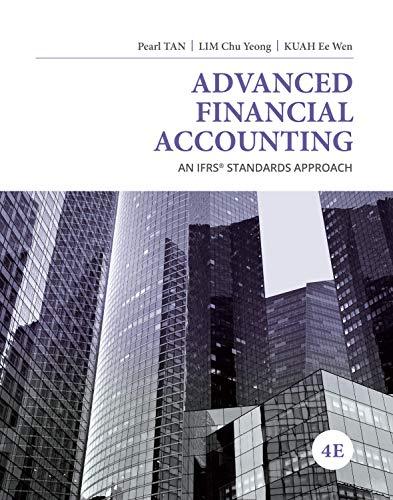Europa, Inc., has twodivisions, A andB, which manufacture expensive bicycles. Division A produces the bicycleframe, and Division B assembles the rest of the bicycle onto the frame. There is a market for both the subassembly and the final product. Each division has been designated as a profit centre. The transfer price for the subassembly has been set at thelong-run average market price. Assume that DivisionA's maximum capacity for this product is 1,400 units per month and sales to the intermediate market are now 1,050 units. The data available for each division are in the accompanying table.
Europa, Inc., has two divisions, A and B, which manufacture expensive bicycles. Division A produces the bicycle frame, and Division B assembles the rest of the bicycle onto the frame. There is a market for both the subassembly and the nal product. Each division has been designated as a prot centre. The transfer price for the subassembly has been set at the long-run average market price. Assume that Division A's maximum capacity for this product is 1,400 units per month and sales to the intermediate market are now 1,050 units. The data available for each division are in the accompanying table. a (Click the icon to view the division data.) R_equired Requirement 1. Suppose the manager of Division A has the option of (a) cutting the external price to $215, with the certainty that sales will rise to 1,400 units or (b) maintaining the external price of $220 for the 1,050 units and transferring the 350 units to Division B at a price that would produce the same operating income for Division A. What transfer price would produce the same operating income for Division A? Is that price consistent with that recommended by the general guideline in the chapter so that the resulting decision would be desirable for the company as a whole? Begin by calculating the contribution difference iftransfers are made to Division B when there is no unused capacity in Division A, under scenario (a) and (b). Select the formula you will use and enter the amounts. (Round your answers to the nearest whole dollar. Use parentheses or a minus sign for a negative contribution difference.) Contribution difference = between (a) and (b) Select the formula you will use to calculate the correct transfer price. (Round your answers to the nearest whole dollar.) + = Minimum Transfer Price + : Requirement 2a. Suppose that if the selling price for the intermediate product were dropped to $215, sales to external parties could be increased to 1,150 units. Division B wants to acquire as many as 350 units if the transfer price is acceptable. For simplicity, assume that there is no extemal market for the nal 250 units of Division A's capacity. Using the general guideline, what is (are) the minimum transfer price(s) that should lead to the correct economic decision? Ignore performance-evaluation considerations. Choose the correct answer below. 0 A. 350 units should not be transferred to Division B. O B. 350 units should be transferred to Division B at a price of $200. 0 c. 350 units should be transferred to Division B at a price of $170. 0 D. 350 units should be transferred to Division B at a price between $130 and $370. 0 E. 350 units should be transferred to Division B at a price between $130 and $200. Requirement 2b. Compare the total contributions under the alternatives to show why the transfer price(s) recommended lead(s) to the optimal economic decision. (Enter positive amounts only.) (a) Total contribution to sell 1,150 outside the company and transfer 250 to Division B (b) Total contribution to sell 1,050 outside the company and transfer 350 to Division B i Division data X Selling price for final product $ 370 Long-run average selling price for intermediate product 220 Incremental cost per unit for completion in Division B 170 Incremental cost per unit in Division A 130 The manager of Division B has made the following calculation: Selling price for final product 370 Transferred-in cost per unit (market) $ 220 Incremental cost per unit for completion 170 390 EA Contribution (loss) on product (20)









